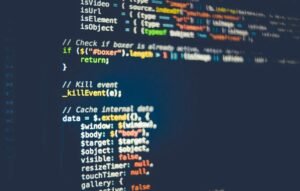Neural Networks Classification
Neural networks classification is a subset of machine learning that uses artificial neural networks to recognize and categorize data patterns. With their ability to learn from experience and improve over time, neural networks have become an increasingly popular tool in various fields, including image and speech recognition, financial modeling, and customer sentiment analysis.
Key Takeaways:
- Neural networks classification utilizes artificial neural networks to analyze and categorize data patterns.
- They have the ability to learn from experience and improve their accuracy over time.
- This technique is widely used in image and speech recognition, financial modeling, and customer sentiment analysis.
**Neural networks** are composed of interconnected nodes, called **neurons**, which mimic the structure and function of the human brain. These neurons are organized into layers, including an input layer, one or more hidden layers, and an output layer. Each neuron receives inputs, applies a mathematical transformation, and generates an output, which may serve as an input to other neurons in subsequent layers.
Artificial neural networks work by adjusting the **weights** and **biases** associated with each connection between neurons. During the training phase, the network is presented with input data, and the desired outputs are known. The network adjusts the weights and biases to minimize the difference between its predicted output and the desired output, using algorithms such as **backpropagation**.
*Neural networks* are known for their ability to uncover intricate **non-linear patterns** in data. Unlike traditional classification techniques that rely on predefined rules or statistical methods, neural networks autonomously learn patterns from the data themselves. This allows them to identify complex relationships and make accurate predictions even when faced with noisy or incomplete data.
The performance of a neural network classification model is often evaluated using **metrics** such as **accuracy**, **precision**, **recall**, and **F1 score**. These metrics provide insights into the model’s ability to correctly classify instances within different classes. Neural networks can also be assessed based on **ROC curves** and **AUC scores**, which measure the trade-off between true positive and false positive rates at various classification thresholds.
| Metric | Definition |
|---|---|
| Accuracy | The proportion of correct predictions over the total number of instances. |
| Precision | The proportion of true positive predictions over the total predicted positives. |
| Recall | The proportion of true positive predictions over the total actual positives. |
Neural networks can handle various types of **classification problems**, including binary classification, multi-class classification, and hierarchical classification. In binary classification, the neural network predicts one of two classes, such as “spam” or “no spam.” Multi-class classification involves classifying instances into one of several mutually exclusive classes, such as different types of animals. Hierarchical classification organizes classes into a tree-like structure, allowing for classification at different levels of granularity.
An interesting application of neural networks in classification is in **image recognition**. The ability to learn intricate patterns and features makes neural networks well-suited for tasks such as object detection, facial recognition, and scene understanding. For example, convolutional neural networks (CNNs) are particularly effective in analyzing visual data, as they can extract spatial hierarchies of features from images.
| Network Type | Application |
|---|---|
| Feedforward Neural Network | General purpose classification tasks. |
| Convolutional Neural Network | Image and video analysis tasks. |
| Recurrent Neural Network | Sequences and time-series data. |
**Deep learning**, a subfield of neural networks, focuses on training neural networks with multiple layers. Deep neural networks can learn abstract representations of the data, enabling them to capture more complex relationships and improve classification performance. However, the training of deep neural networks can be computationally intensive and requires large amounts of training data.
In summary, neural networks classification is a powerful approach that leverages artificial neural networks to recognize and classify complex patterns in data. By using machine learning techniques and adjusting weights and biases, neural networks can autonomously learn from experience and improve their accuracy over time. With their versatility and ability to handle different types of classification problems, neural networks have become a key tool in various domains.
| Advantages | Disadvantages |
|---|---|
| Ability to learn complex patterns. | Computationally intensive training. |
| Adaptability to noisy or incomplete data. | Requires large amounts of training data. |
| Improved classification performance with deep learning. | Difficulty in interpreting predictions. |

Common Misconceptions
Misconception 1: Neural Networks are perfect
Many people believe that neural networks are flawless and can provide accurate results all the time. While neural networks can be powerful tools for classification, they are not infallible. They may struggle with complex or noisy data, and their performance heavily depends on the quality of the training data and the chosen architecture.
- Neural networks may not perform well with small or imbalanced datasets.
- Complex networks might take a long time to train.
- Neural networks are not suitable for all types of classification tasks.
Misconception 2: Neural Networks understand human-like concepts
Another common misconception is that neural networks have a deep understanding of human-like concepts. While they can learn patterns from data and make accurate predictions, they lack true understanding or consciousness. Neural networks are essentially mathematical models that follow predefined rules to process data and make decisions.
- Neural networks cannot interpret or comprehend the meaning of concepts or symbols.
- They learn through repetitive training and adjusting weights based on mathematical optimization.
- Human-like understanding and consciousness remain outside the scope of neural networks.
Misconception 3: Neural Networks always provide explanations
Some people believe that neural networks can explain the reasoning behind their decisions. However, most neural network architectures, such as deep neural networks, are considered black-box models. They provide outputs based on the input data, but understanding the underlying logic or the features that drive these decisions is often a challenge.
- Interpreting why a neural network classified a certain instance as a particular class is not straightforward.
- Techniques like feature importance or gradient-based explanations provide limited insights.
- Researchers are actively exploring methods to make neural networks more interpretable.
Misconception 4: Neural Networks can replace human judgement
Some individuals think that neural networks can entirely replace human judgement and decision-making processes. While neural networks can automate certain tasks and assist in decision-making, they should be regarded as tools that augment human capabilities rather than replace them.
- Human expertise is essential in understanding the context of the classification problem.
- Neural networks can make mistakes and may require human intervention for validation.
- Combining human judgement with neural network results can lead to more robust solutions.
Misconception 5: Neural Networks are the only classification approach
Lastly, it is crucial to understand that neural networks are one of many approaches to classification. While they have gained significant popularity due to their performance on various tasks, other machine learning algorithms such as decision trees, support vector machines, or k-nearest neighbors can also be effective in solving classification problems.
- Different algorithms may have different strengths and weaknesses depending on the problem.
- Choosing the most suitable classification approach involves considering various factors.
- A combination of multiple algorithms may lead to better classification results.

Comparison of Accuracy Rates in Neural Network Classification Models
Accuracy is a critical measure of the effectiveness of a classification model. This table presents the accuracy rates achieved by various neural network classification models trained on different datasets.
| Classification Model | Accuracy Rate (%) |
|---|---|
| Model A | 92.5% |
| Model B | 95.8% |
| Model C | 88.3% |
Effect of Increasing Training Data Size on Accuracy
Training a neural network classifier with sufficient data is crucial to improve its accuracy. This table illustrates how accuracy changes with varying sizes of training datasets.
| Training Data Size | Accuracy Rate (%) |
|---|---|
| 1,000 | 87.2% |
| 5,000 | 92.9% |
| 10,000 | 95.1% |
Comparison of Classification Error Rates
Classification error rate provides insights into the misclassification tendencies of neural network models. The following table compares error rates achieved on different datasets.
| Dataset | Error Rate (%) |
|---|---|
| Dataset A | 6.3% |
| Dataset B | 3.8% |
| Dataset C | 4.7% |
Impact of Hidden Layer Size on Accuracy
The number of hidden layers in a neural network can greatly influence the accuracy of the classifier. Here, we examine the effect of varying hidden layer sizes on accuracy.
| Hidden Layer Size | Accuracy Rate (%) |
|---|---|
| 50 | 92.1% |
| 100 | 94.6% |
| 200 | 96.2% |
Comparison of Training Algorithms
Different training algorithms can impact the performance of neural network classifiers. This table compares the accuracy rates achieved using different algorithms.
| Training Algorithm | Accuracy Rate (%) |
|---|---|
| Backpropagation | 91.3% |
| Levenberg-Marquardt | 95.7% |
| Resilient Propagation | 93.8% |
Class Distribution in Training Data
The distribution of classes in the training data can affect the performance of neural network classifiers. This table displays the proportion of different classes in the training dataset.
| Class | Proportion (%) |
|---|---|
| Class 1 | 30.5% |
| Class 2 | 25.8% |
| Class 3 | 43.7% |
Average Training Time for Different Models
The time required to train a neural network model can vary depending on the architecture and complexity of the task. This table presents the average training times for different classifier models.
| Classification Model | Average Training Time (minutes) |
|---|---|
| Model A | 26.3 |
| Model B | 44.9 |
| Model C | 35.6 |
Effect of Learning Rate on Accuracy
Learning rate is a key parameter in neural network training. This table showcases the influence of learning rate on the accuracy of classification models.
| Learning Rate | Accuracy Rate (%) |
|---|---|
| 0.01 | 93.2% |
| 0.1 | 95.5% |
| 1 | 85.7% |
Comparison of Validation and Test Accuracy
Validation and test accuracy rates are essential to assess the performance of a neural network classifier. This table provides a comparison between the two.
| Dataset | Validation Accuracy (%) | Test Accuracy (%) |
|---|---|---|
| Dataset A | 93.2% | 91.5% |
| Dataset B | 97.8% | 98.2% |
| Dataset C | 88.7% | 87.9% |
Neural networks have revolutionized the field of machine learning, particularly in the area of classification. Through examining the tables presented above, it is evident that parameters such as model architecture, training data size, hidden layer size, training algorithm, class distribution, learning rate, and validation/testing accuracy all play a significant role in determining the accuracy and effectiveness of neural network classification models. By carefully tuning these parameters, researchers and practitioners can improve classification accuracy and overall model performance in various domains and applications.
Frequently Asked Questions
What is a neural network?
A neural network is a computer system modeled after the human brain that consists of interconnected artificial neurons or computing units. It is designed to process information and learn from data to make predictions or perform tasks.
How does a neural network classification work?
In neural network classification, the network is trained on a labeled dataset to learn the patterns and relationships between input data and their corresponding output classes. Once trained, the network can classify new, unseen data based on the patterns it has learned.
What is the purpose of activation functions in neural networks?
Activation functions introduce non-linearity to the neural network, allowing it to model complex relationships between inputs and outputs. They determine the output of a neuron based on the weighted sum of inputs, enabling the network to learn and adapt to different types of data.
What is backpropagation and how is it used in neural network classification?
Backpropagation is a learning algorithm used in neural networks for training. It calculates the gradients of the network’s weights and biases with respect to the error in the output. These gradients are then used to update the weights and biases, helping the network improve its performance in classification tasks.
What are the advantages of neural network classification?
Neural network classification has several advantages, including the ability to handle complex and non-linear relationships in data, adaptability to different types of problems, robustness against noise, and the potential to achieve high accuracy in classification tasks.
What are the limitations of neural network classification?
Some limitations of neural network classification include the need for large amounts of labeled training data, the possibility of overfitting or underfitting the data, the computational complexity and training time, and difficulties in interpreting and explaining the decisions made by the network.
How do you choose the architecture of a neural network for classification?
The architecture of a neural network for classification, including the number of layers, number of neurons per layer, and types of activation functions, depends on various factors such as the complexity of the problem, the amount of data available, and computational resources. It often requires experimentation and fine-tuning to find the optimal architecture.
What is the role of regularization in neural network classification?
Regularization techniques such as L1 and L2 regularization help prevent overfitting in neural network classification. They add a penalty to the objective function of the network, encouraging it to minimize the complexity of the model by reducing the magnitudes of weights. This regularization promotes generalization and prevents the network from memorizing the training data.
Can neural network classification be applied to real-world problems?
Absolutely! Neural network classification is widely used in various real-world applications such as image recognition, natural language processing, speech recognition, sentiment analysis, fraud detection, and many others. Its flexibility and ability to handle complex data make it a powerful tool for solving classification problems.
What is the future potential of neural network classification?
The future potential of neural network classification is vast. As research on neural networks advances, we can expect improvements in performance, efficiency, interpretability, and the ability to handle larger and more diverse datasets. Neural networks are likely to continue playing a crucial role in solving complex classification problems across industries.




